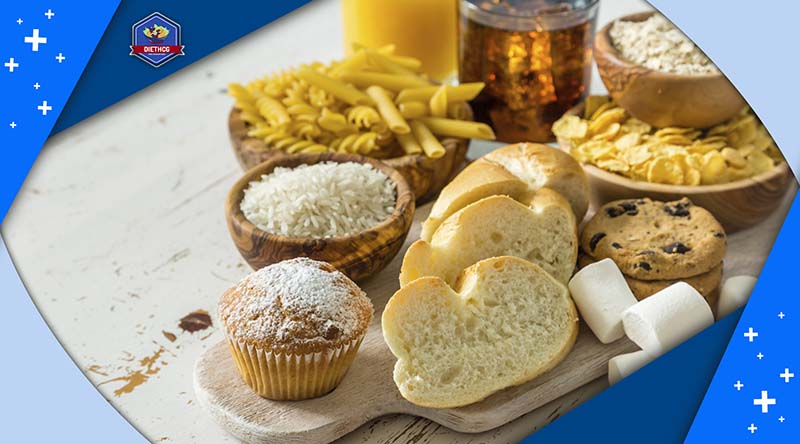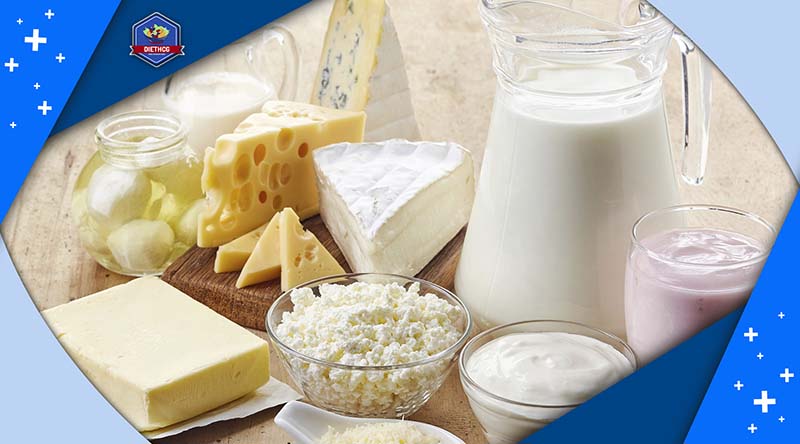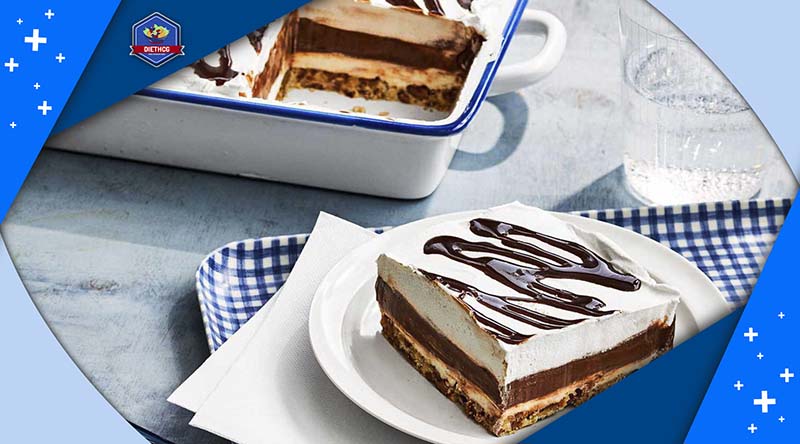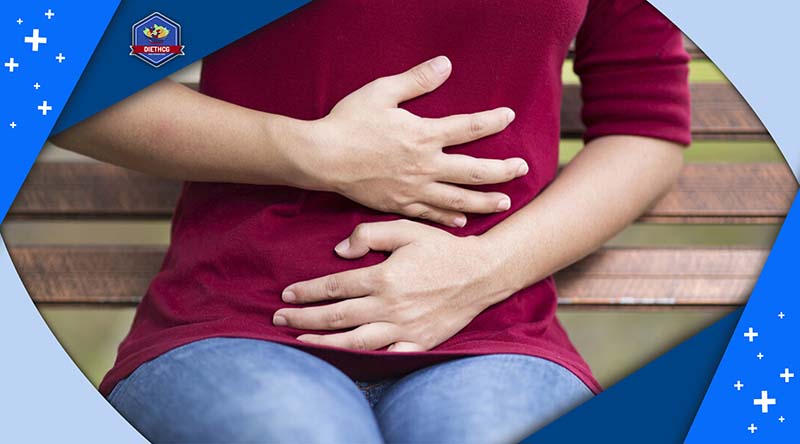A low residue diet focuses on reducing high fiber foods to decrease the frequency and volume of bowel movements. It’s particularly beneficial for individuals with specific medical conditions, such as Crohn’s disease.
Additionally, this diet restricts dairy products that could lead to significant colonic residue.
Healthcare providers often recommend a low residue diet for individuals facing various gastrointestinal problems or as preparation for diagnostic procedures related to these issues. This article from DietHCG will detail what a low-residue diet entails.

1. What Is a Low Residue Diet?
A low residue diet aims to ease the workload on your digestive system. It’s quite similar to a low fiber diet but goes further by excluding some foods that could trigger bowel contractions.
When we talk about “residue,” we’re referring to the leftovers in your digestive system after the initial stages of digestion. These leftovers often contain a lot of fiber because our bodies struggle to fully break down fiber.
By restricting foods that contain indigestible material, a low residue diet prompts the body to produce smaller amounts of stool less often.
This diet is typically recommended for individuals experiencing inflammatory bowel disease (IBD) flares, preparing for bowel surgery or colonoscopy, and those dealing with infectious colitis or acute diverticulitis.

2. How Does a Low Residue Diet Work?
The recommended daily fiber intake for most people ranges from 25 to 38 grams. However, this might not be suitable for individuals with inflammatory bowel disease (IBD). If you’re facing IBD symptoms or preparing for bowel surgery, it’s best to steer clear of a high fiber diet.
On a low residue diet, the typical advice is to keep your fiber intake between 10 to 15 grams per day.
Additionally, it’s wise to avoid most dairy products and certain types of carbohydrates, as they could trigger abdominal cramps and diarrhea.
You should seek guidance from a healthcare professional or nutritionist when starting a low-residue diet. They’ll tailor the diet to your specific needs, determining the suitable amounts and types of food, as well as the duration of the diet. Typically, low residue diets are short-term solutions.
These guidelines for a low residue diet are general and can be adjusted based on your body’s response and the recommendations of your healthcare team.
3. Recommended Foods for a Low Residue Diet
Adopting a low-residue diet includes choosing foods that are low in fiber and easy to digest. Below is a list of recommended foods for people following a low-residue diet:
Refined Carbohydrates: Opt for easily digestible foods like white bread, pasta, rice, saltine crackers, refined cereals (e.g., puffed rice, corn flakes), and skinless, cooked potatoes.

Fruits and Vegetables: Choose ripe, skinless, and seedless fruits, whether raw, canned, or cooked, such as apricots, bananas, and melons. For vegetables, select well-cooked or canned varieties without skin or seeds, such as artichoke hearts, beets, and carrots. Limited amounts of certain raw vegetables like shredded lettuce and skinless cucumbers are acceptable.
Milk and Dairy Products: Consume small quantities of smooth dairy products like milk, yogurt, custard, ice cream, cottage cheese, and ricotta cheese.

Meat and Protein Sources: Opt for finely ground, well-cooked, or tender meats like beef, lamb, pork, poultry, fish, eggs, and organ meats.
Sauces and Condiments: Stick to safe options such as butter, margarine, vegetable oil, plain gravy, honey, syrup, and mild spices and herbs.
Drinks: Increase fluid intake to prevent constipation with water, clear broths, clear fruit juices, and strained vegetable juices.
Snacks, Sweets, and Desserts: Enjoy small portions of plain snacks and sweets, including cake, cookies, custard, ice cream, popsicles, pretzels, pudding, and sherbet.

4. Foods to Avoid on a Low Residue Diet
In addition to recommending suitable foods, here are some items that are often excluded:
- Legumes, nuts, and seeds
- Most raw fruits and vegetables
- Popcorn
- Unprocessed coconut
- Most whole grains, including breads or pastas
- Figs, prunes, and berries
- Dried fruits
- Deli meats
- Spicy foods and dressings
- Caffeine
- Prune juice or juice with pulp
- Chocolate
- Tough, fibrous meats with gristle
Avoiding these foods can help minimize digestive distress and ensure the effectiveness of the low residue diet.
5. When to Start a Low Residue Diet?
A low residue diet may be beneficial in various circumstances and conditions, as recommended by your healthcare team. Here are some situations where it might be advised:
Crohn’s Disease: Crohn’s disease, an autoimmune disorder causing inflammation in the digestive tract, often affects individuals with a family history. While there’s no cure, dietary changes may assist in achieving remission. Some Crohn’s patients experience bowel obstructions or narrowing of the lower small intestine (ileum), leading to symptoms like pain and cramping. Though research on its effectiveness remains inconclusive, a low residue diet might alleviate these symptoms.
Ulcerative Colitis: Similarly, individuals with ulcerative colitis, characterized by inflammation and ulcers in the large intestine, may find relief with a low residue diet. Despite the lack of consensus on its effectiveness, this diet could aid in maintaining adequate nutrition during recovery from bowel obstructions or surgery.

Preparation for a Colonoscopy: Before undergoing a colonoscopy, a procedure to detect abnormalities in the large intestine and rectum, a low residue diet may be prescribed. By reducing the size and frequency of stools, this diet facilitates clearer examination during the procedure.
Recovery After Bowel Surgery: Following recent bowel surgery, such as ileostomy, colostomy, or resection, healthcare professionals might recommend a temporary adherence to a low residue diet to aid in recovery.
6. Conclusion
A low residue diet restricts the intake of foods like raw fruits and vegetables, seeds and nuts, beans, and whole grains due to their tendency to leave undigested remnants (residue) in the colon. This diet is often advised for managing digestive disorders, preparing for a colonoscopy, or during recovery from surgery.
Maintaining proper nutrition can become challenging the longer one follows a low-residue diet. Collaborating with your healthcare provider and a registered dietitian to develop a meal plan can help balance your symptoms, dietary preferences, and nutritional requirements.


